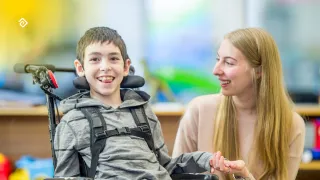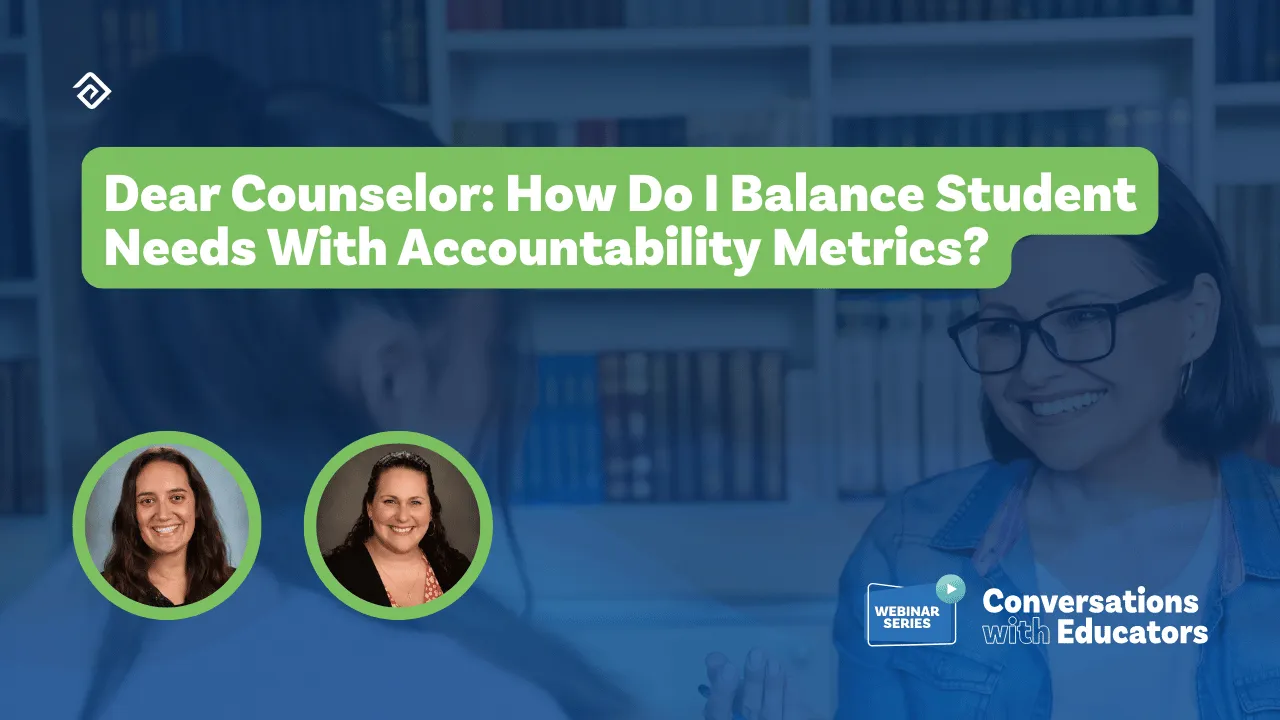Modification vs. Accommodation in Education: Fostering Equity and Inclusivity

Accommodation and modification are two ways schools support student success — regardless of individual needs and learning differences. These strategies adjust how students learn, what they’re taught, or how they’re assessed, allowing students with special needs to thrive alongside their peers.
While both approaches aim to support students, they serve different purposes. Understanding the distinction between accommodations and modifications is key to creating inclusive learning environments where every student feels valued and supported in their learning journey.

Accommodation vs Modification: What’s the Difference?
Although these terms are sometimes used interchangeably in discussions about education and accessibility, they actually refer to different concepts. Simply put, accommodations provide additional support or adjustments so that all students can engage with the same coursework. On the other hand, modifications involve altering the curriculum to better suit unique student needs — especially for those with disabilities or learning difficulties.
In essence, accommodations adjust how students engage with the material, while modifications change what students are expected to learn.
Who Benefits From Accommodations and Modifications?
Accommodations and modifications in education are designed to support students with unique learning needs and challenges that might impact their ability to fully participate in everyday classroom activity. These needs can stem from a variety of conditions, including:
- Learning differences like dyslexia, dysgraphia, or dyscalculia, which can affect reading, writing, or math skills.
- Attention-related issues such as ADHD or ADD, making it difficult to focus or stay on task.
- Autism spectrum disorder (ASD), which can involve challenges with social interaction, communication, and behavior.
- Physical disabilities or mobility impairments that affect movement, coordination, or accessing classroom materials.
- Sensory impairments that affect vision or hearing, requiring alternative methods of instruction or communication.
- Cognitive impairment like speech and language disorders, impacting communication skills and calling for specialized support.
- Emotional or behavioral challenges that can make it hard for students to manage their emotions or behavior in class.
- Chronic health conditions such as epilepsy or diabetes, which can affect energy levels, concentration, or attendance.
In short, accommodations and modifications are all about providing tailored support and ensuring students learn at the right instructional level. This equips each learner to succeed and participate fully in their education.

Understanding Accommodations
For students with disabilities, learning alongside their classmates without disabilities in a regular classroom can be challenging. Accessibility to learning materials and showcasing what they've learned can be tough. That's where accommodations come in.
Accommodations provide extra support to help students with a learning disability reach the same goals as their peers. For instance:
- A student with visual impairments might struggle with reading printed text. Accommodations could include offering an audio version of the text, large-print materials, or Braille.
- A student with physical or orthopedic challenges might find writing difficult. In this case, using a speech-to-text device or allowing oral responses could be helpful.
Some might worry that accommodations give students with disabilities an unfair advantage, but that’s not the case. Accommodations don’t change the learning goals or standards. Instead, they:
- Keep the learning objectives the same
- Maintain consistent standards for tasks
- Use the same learning materials as everyone else
When used correctly, an appropriate accommodation levels the playing field, allowing students with disabilities to perform tasks on par with their peers. It’s important for teachers to personalize accommodations based on each student's unique needs. What works for one student might not work for another.
Take visual impairments, for example; while Braille might benefit some students with visual impairments, others might find audiobooks more effective. In any case, teachers should always refer to each student’s Individualized Education Program (IEP) to provide the right support for their success.
Examples of Accommodations
- Reading instructions aloud or offering audiobooks
- Allowing students with vision impairments to sit closer to the board, or providing magnification devices, Braille, or large-print materials
- Making preferential seating arrangements for students with ADHD to help reduce distractions
- Allowing the use of human readers or text-to-speech and speech-to-text devices
- Paraphrasing information or repeating directions as needed
- Providing extra time or offering breaks during tests
Understanding Modifications
Some students face challenges in the classroom that go beyond what accommodations alone can address. For those with moderate to severe disabilities, teachers may need to offer extra support and additional time to help them fully participate and succeed. This often involves adjusting the content being taught, the level of assessment, or the grading scale to better meet the needs of these students.
In simple terms, students receiving modifications may not be expected to learn the same material or skills as their grade level peers. For example, a teacher might assign shorter reading tasks, simpler spelling tests, or fewer questions on exams, focusing on different material than what is typically covered.
Providing modifications generally means:
- Adjusting learning expectations
- Simplifying task requirements
However, it's important for teachers to carefully review and follow a student's IEP or 504 plan before implementing modifications. This is because changing the learning material or tests could impact the student’s engagement with the general education curriculum.

Examples of Modifications
- Allowing a student with special needs or a learning disability to choose from a few options instead of having to create responses entirely on their own
- Overlooking certain aspects like grammar or spelling when grading assignments
- Tailoring assignments to fit the student’s current skill level, ensuring they are appropriately challenged
- Reducing the amount of reading material or the number of test questions to match the student’s learning pace
- Adjusting math problems to fit the student’s proficiency level, such as using simpler multiplication or addition tasks
- Assigning shorter or modified tasks, like writing a single paragraph instead of a multi-paragraph essay, or providing summaries instead of full-length texts
For educators interested in learning more about crafting individualized plans to address students' specific challenges, here’s a detailed checklist for accommodations and modifications.
Looking at Legal Framework and Implementation Guidelines
Navigating the legal landscape for accommodations and modifications is a crucial aspect of the process. Here’s a quick rundown of the key laws to know:
- Individuals with Disabilities Education Act (IDEA): Guarantees that students with disabilities get a free, appropriate public education through personalized IEPs.
- Section 504 of the Rehabilitation Act: Makes sure students with disabilities are not discriminated against and receive reasonable accommodations in all federally funded programs.
- Americans with Disabilities Act (ADA): Extends protections to all public and private entities, ensuring equal access to education and services.
- Every Student Succeeds Act (ESSA): Ensures that students with disabilities are fairly assessed and receive the support needed to meet academic standards.
- Family Educational Rights and Privacy Act (FERPA): Safeguards the privacy of student records, including details about accommodations and modifications.
These regulations help create inclusive learning environments and ensure every student has the support they need to thrive.
The Value of Educator Training and Collaboration
Effective accommodations and modifications start with knowledgeable educators who work well with specialists, parents, and administrators. Here’s how your school can boost success:
- Offer ongoing training: Keep teachers updated with continuous professional development on the latest strategies and legal standards.
- Foster collaboration: Encourage regular teamwork and communication among educators, specialists, and families to ensure accommodations are well-integrated.
- Use data wisely: Regularly review student progress to tweak and improve accommodations based on what’s working.
- Build a collaborative culture: Create an environment that values input from all stakeholders, holding regular meetings to align strategies.
Empowering Inclusive Learning Environments With Education Advanced
Understanding classroom accommodations and modifications can help teachers provide the right support for students' diverse learning needs. This knowledge allows teachers to remove barriers that might otherwise prevent some students from fully participating in classroom instruction. However, implementing these accommodations and modifications can be challenging, especially in an inclusive classroom where students with special needs learn alongside their peers.
To simplify this process and effectively manage assessments and accommodations, schools can use tools like Test Hound. This powerful assessment coordination tool helps plan and coordinate all state and local K-12 school assessments. With Test Hound, schools can automate their assessment processes, support students more effectively, and create an inclusive learning environment.
If your school is looking for ways to enhance the learning experience, you might also be interested in automating tasks and streamlining processes. Education Advanced offers a range of tools designed to help. For example:
- Testhound: Our test accommodation software helps schools coordinate thousands of students across various state and local assessments, considering numerous accommodations like reading disabilities, physical disabilities, and translations.
- Pathways: Our college and career readiness software helps administrators and counselors track and analyze graduation pathways, ensuring students stay on track to graduate.
- Evaluation: Our teacher evaluation software documents every step of the staff evaluation process, making it easier to manage staff assessments.
Original Publish Date April 15, 2024 | Updated August 2, 2024
More Great Content
We know you'll love





